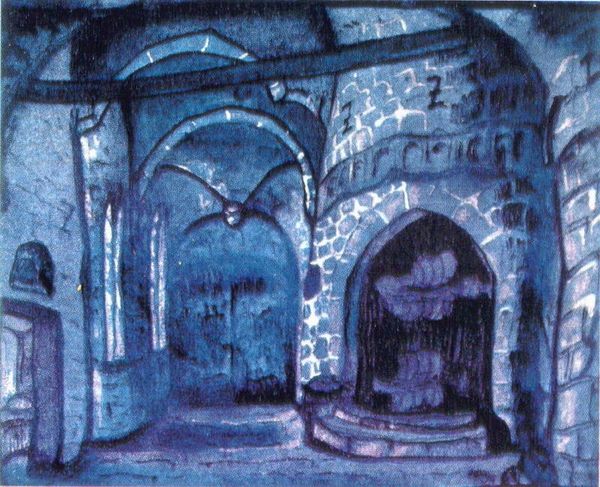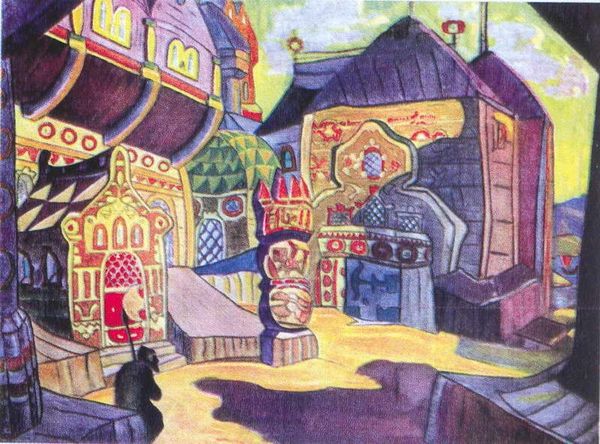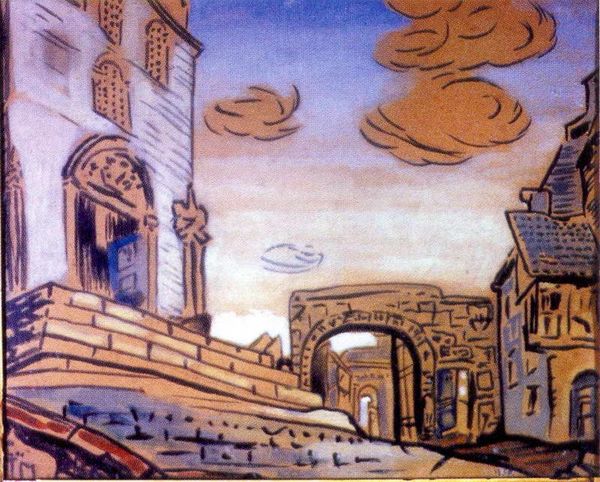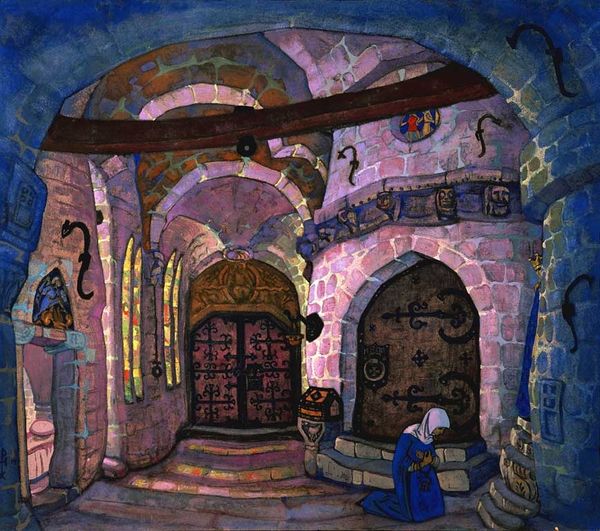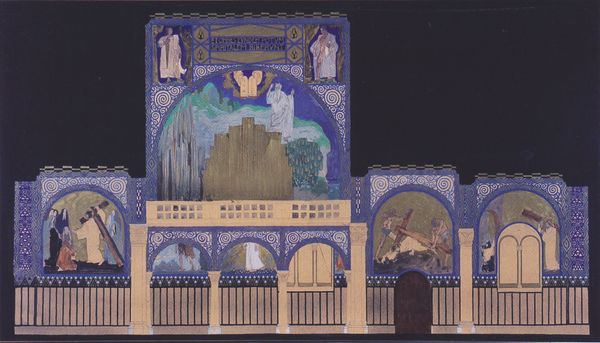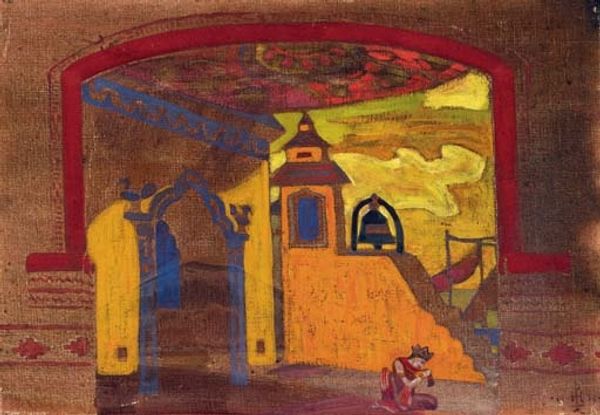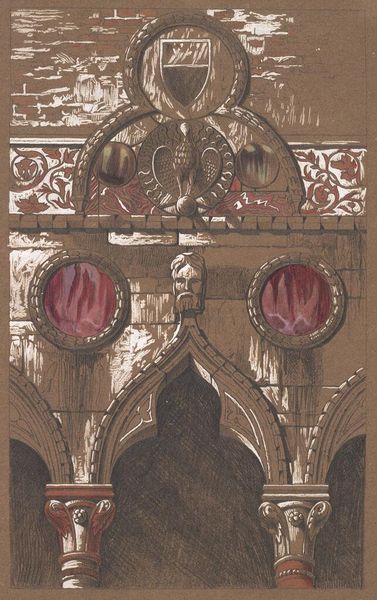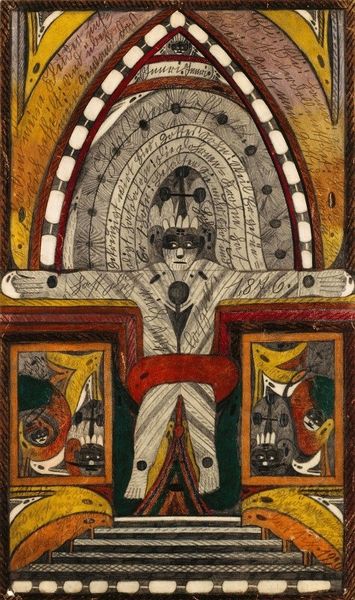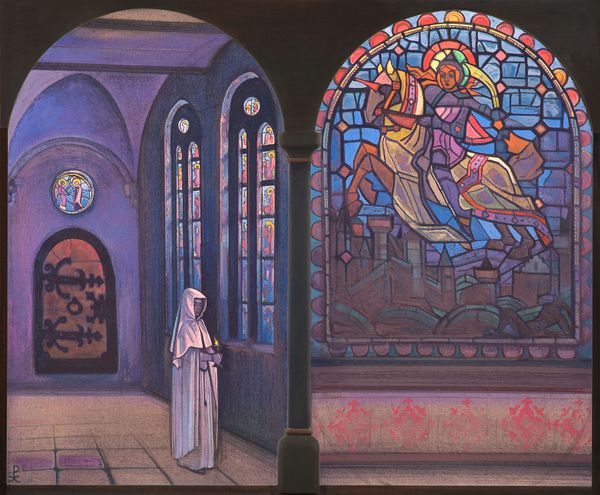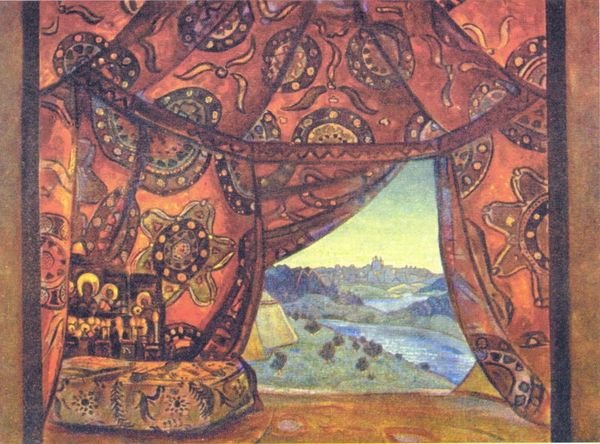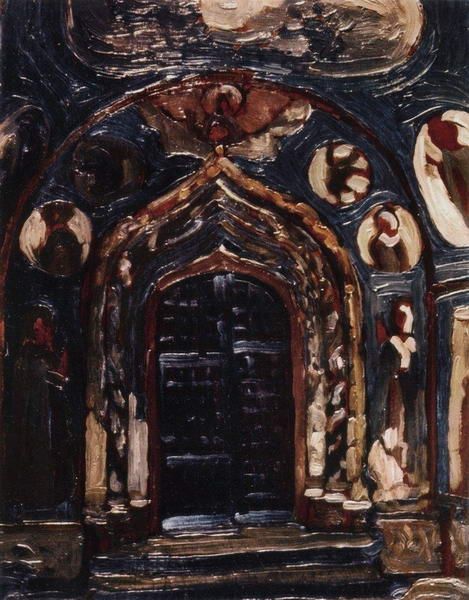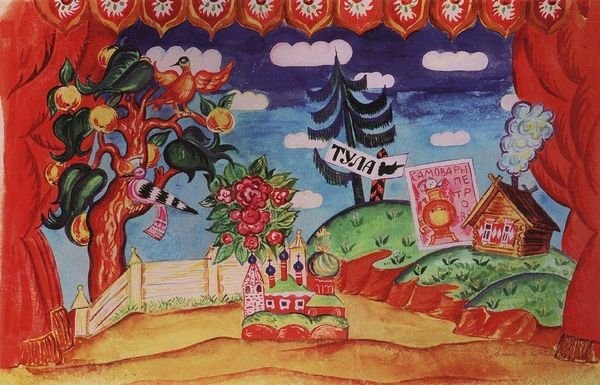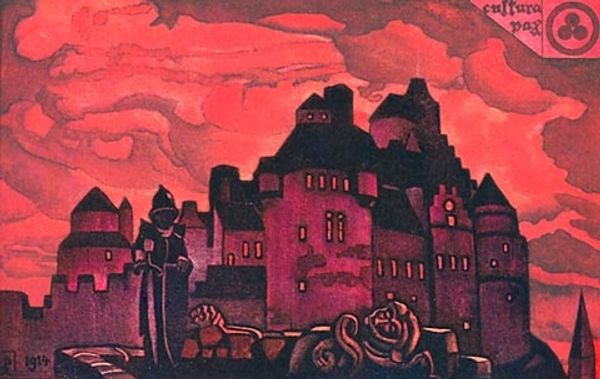
tempera, painting
#
cubism
#
narrative-art
#
tempera
#
painting
#
mural art
#
naive art
#
cityscape
#
academic-art
Dimensions: 21.6 x 26 cm
Copyright: Public domain US
Editor: This is Pablo Picasso's set design for "Pulcinella," created in 1920 using tempera. It depicts the interior of a theatre, with an odd juxtaposition of a formal stage, and an almost dreamlike depiction of a landscape peeking from behind the curtains. What do you see in this piece, in terms of its imagery? Curator: The painting pulsates with duality. Notice how the geometric precision of the theatre architecture contrasts so vividly with the idyllic, almost naive cityscape revealed on the stage? This contrast speaks volumes. Do you notice how the theatergoers are so rigidly positioned in the loges? Editor: Yes, they look like little chess pieces. Almost uniformly attired in black. Curator: Exactly! Now consider Pulcinella himself, a stock character from commedia dell'arte. He represents chaos and disruption. The architectural constraints emphasize a society striving for order. But look, even they long for emotional escape through narrative—the stage on stage alludes to repressed societal desire. The moon in the backdrop suggests something more—longing? Editor: It's like a contained explosion of desires. Curator: Precisely! The architectural setting is rendered almost as a prison for desire and longing. Notice that circular mural painting above, seemingly portraying idealized mythological scenes that remind us that the “real” reality is that of the stage itself! Editor: So the "real" and the represented clash. That is incredible! Curator: These recurring forms function almost like a collective dream, offering glimpses into the shared psyche of a culture grappling with tradition, modernity, and repressed longings. It offers fertile ground for considering cultural memory as a continuum. Editor: Thanks; now I know what questions to consider!
Comments
No comments
Be the first to comment and join the conversation on the ultimate creative platform.
